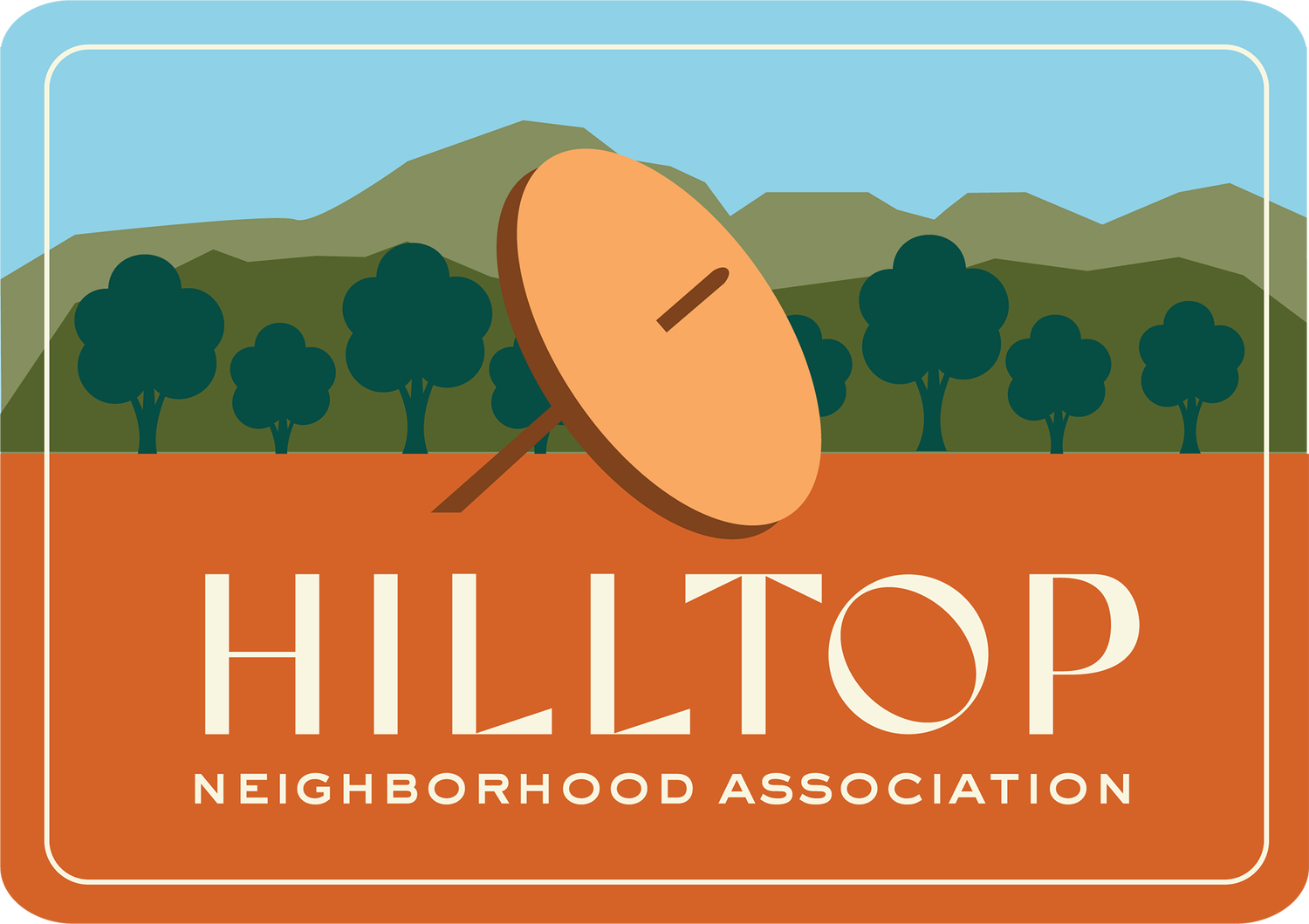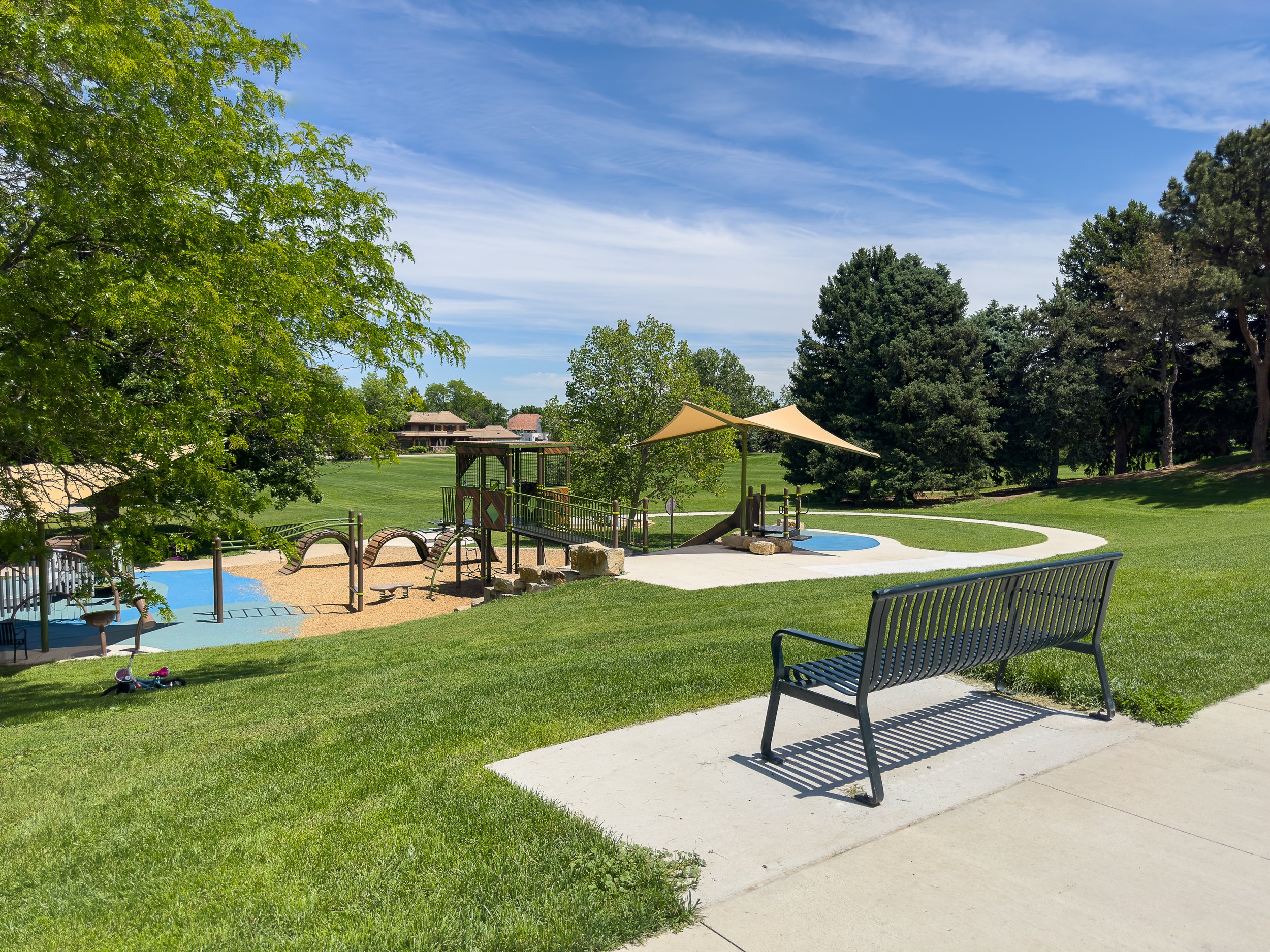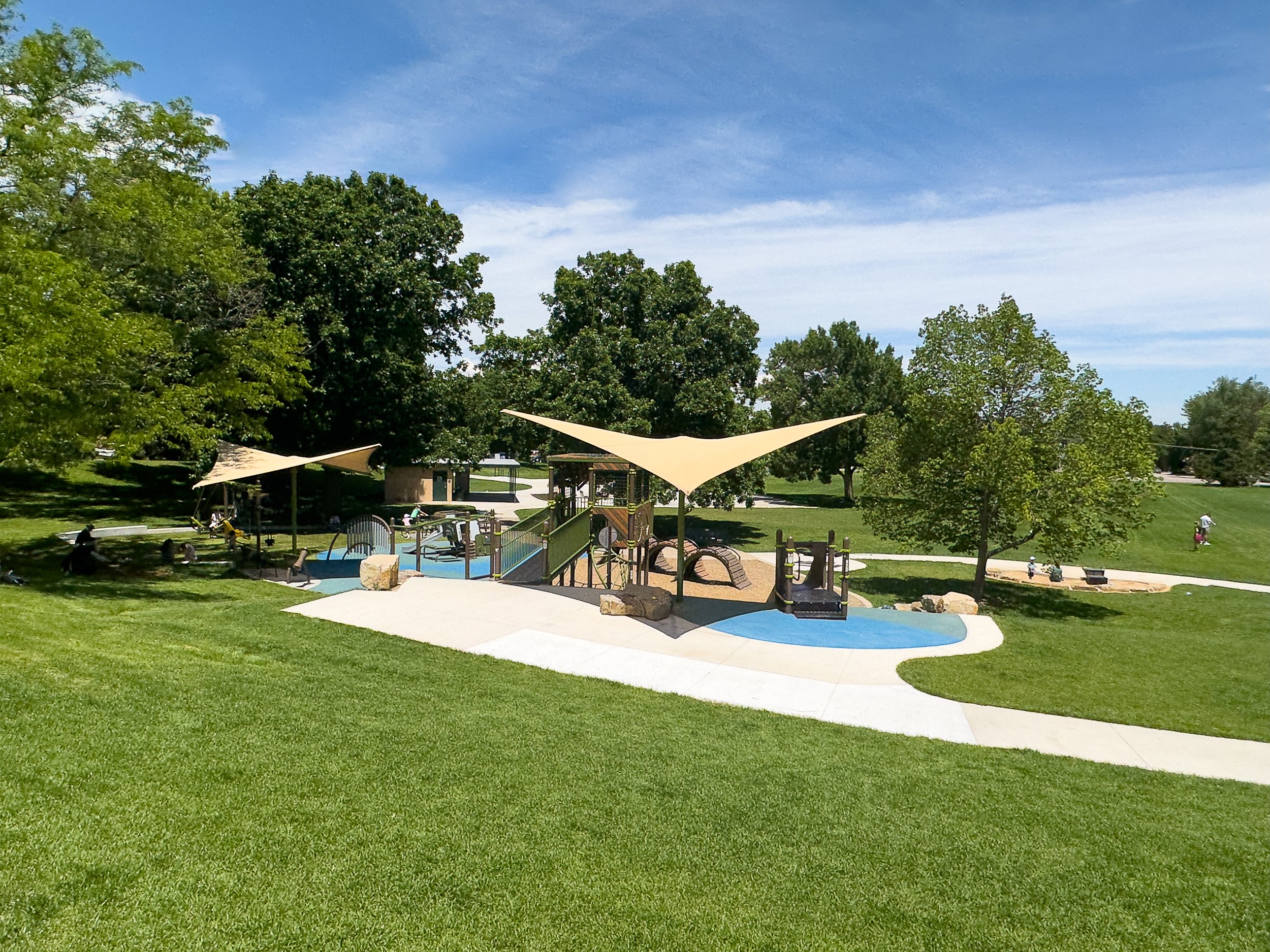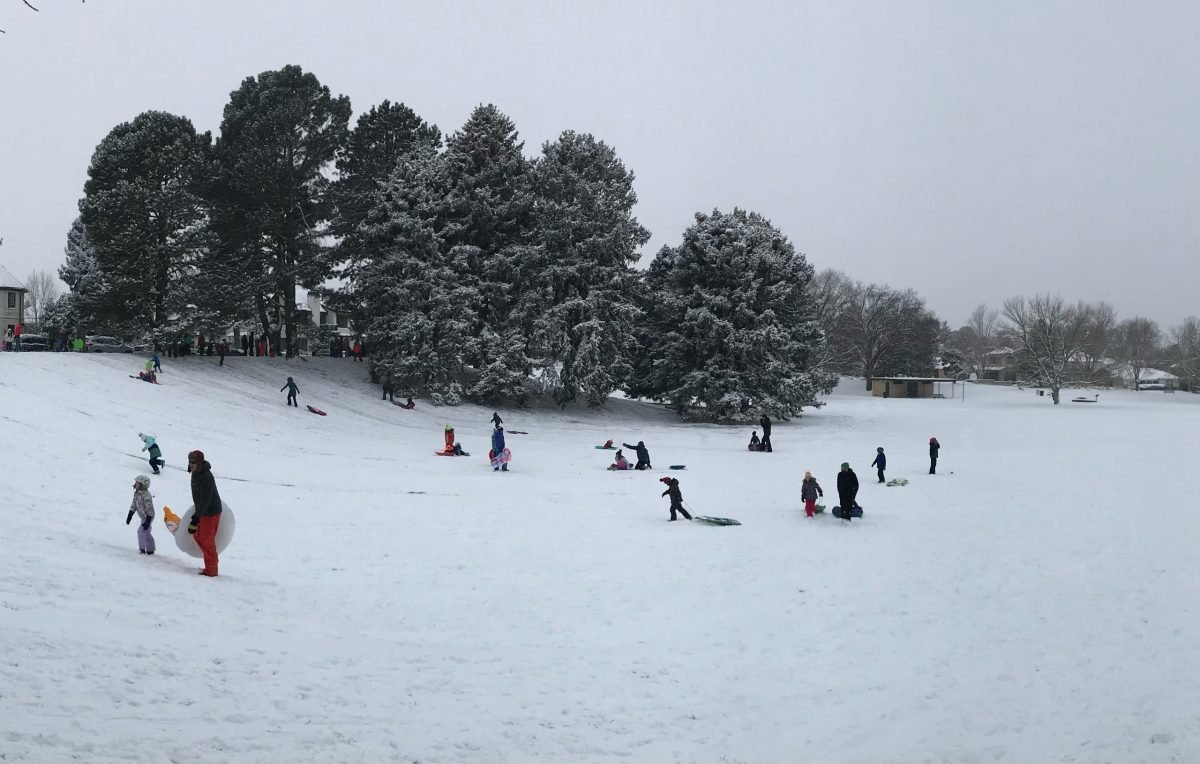
Parks & Recreation
⌂ » Resources » Parks & RecreationPark Saftey and Information
The Parks and Parkways within our neighborhood include Cranmer Park, Robinson Park, Burns Park, and the 6th Avenue Parkway. The Association has been involved with the parks in our neighborhood by providing monetary grants and recruiting volunteers for park monitoring and garden maintenance. Additionally, neighborhood volunteers serve on the Parks and Recreation Advisory Board. For more information about park hours, holding an event at one of Hilltop’s parks, pets in the park, etc, please visit Denver’s Parks and Recreation page.
Park rules overview:
Parks are open daily from 5:00 AM to 11:00 PM.
No glass containers are allowed.
Only 3.2% alcoholic beverages are permitted.
All dogs must be on a leash unless inside the boundaries of a dog park.
Feeding of wildlife is prohibited.
Restrooms are available for use between May and September.
No littering. Always use trash receptacles or carry your trash out.
Game Plan for a Healthy City
The City of Denver is in the midst of reviewing city plans, including the long-range planning for our parks and recreation centers. Please visit the Denveright pages about the Game Plan for a Healthy City to read the Executive Summary and Read the Plan and learn how the plan was developed.
Residents should report issues to pocketgov.com or 311 so that a case ticket can be generated and routed to the appropriate agency.
Cranmer Park aka Sundial Park
Cranmer Park is a Denver city park located in the Hilltop neighborhood off of Colorado Boulevard between East 1st and East 3rd Avenue. It is most famous for a large sundial, which does double duty as a climbing appliance for children, and a terrace that offers panoramic views of the Rocky Mountains and the city skyline. But how did this park come to be, and what is its significance to Denver's history?
The park was originally part of a 240-acre farm owned by George W. Clayton, a wealthy businessman and philanthropist who came to Denver in 1859. Clayton donated his land to the city in 1899, with the stipulation that it be used for public purposes. The city sold some of the land to developers, but kept 20 acres for a park that was named Clayton Park in his honor.
In 1926, George Cranmer, the manager of Denver's Parks and Improvements Department, bought a house on the edge of Clayton Park and began to transform the park into his vision of a "country estate in the city". He hired landscape architect Saco Rienk DeBoer to design a formal garden with terraces, fountains, and statues. He also commissioned artist Arnold Ronnebeck to create a sundial that would be accurate at Denver's latitude and longitude. The sundial was installed on a circular platform made of flagstone from Colorado quarries, surrounded by a low wall with inscriptions of mountain peaks and their elevations.
Cranmer donated his house and garden to the city in 1937, and the park was renamed Cranmer Park in his honor. The park became a popular destination for picnickers, stargazers, and sightseers who enjoyed the views and the sundial. The park also hosted events such as concerts, weddings, and fireworks displays.
However, the park also faced challenges over the years. In 1965, vandals blew up the sundial with dynamite, leaving only fragments behind. The city replaced it with a replica in 1966, using some of the original pieces. In 1992, another act of vandalism damaged the sundial's gnomon (the part that casts the shadow). The city repaired it again with donations from the community.
The most recent threat to the park was weather erosion, which caused "significant damage" to the terrace and its flagstones. The city launched a restoration project in 2018, with funding from grants, bonds, and private donations. The project aimed to preserve the historic features of the park while improving its accessibility and safety. The project was completed in 2020, and the park reopened to the public with a celebration ceremony.
Today, Cranmer Park is a cherished landmark that reflects Denver's history and culture. It is a place where people can enjoy nature, art, and education in a beautiful setting. It is also a testament to the vision of George Cranmer and the dedication of the community that supports it.
BOWS is a public art installation by Patrick Marold, a Denver-based artist who has been working to bind the physical environment with our sense of orientation for over two decades. The sculpture consists of 32 steel arches that span across the lawn of Cranmer Park, also known as Sundial Park, in Denver, Colorado. The arches are arranged in a radial pattern that aligns with the cardinal directions and the sundial at the center of the park. The sculpture creates a dynamic visual experience that changes with the seasons, the time of day, and the viewer's position. BOWS invites the visitors to explore the relationship between the natural and the man-made, the sun and the earth, and the past and the present.
The Save the Sundial project was a park improvement initiative that aimed to restore and rebuild the historic sundial and plaza in Cranmer Park, also known as Sundial Park, in Denver, Colorado. The Park People led the project. This nonprofit organization works to enhance Denver's parks and open spaces in partnership with the local community and the city's Department of Parks and Recreation. The project began in 2014 and was completed in 2018 after raising over $2 million from public and private sources. The project involved repairing the damaged sundial, vandalized in 2013, and reconstructing the plaza, which was cracking and sinking due to poor soil conditions. The new plaza features a terrazzo map of Colorado and surrounding states and engraved bricks honoring donors and supporters. The project also improved the landscaping, irrigation, drainage, lighting, and accessibility of the park. The Save the Sundial project was a successful example of how collaboration and community engagement can preserve and enhance a beloved park landmark for future generations.
D.C. Burns Park
DC Burns Park is a triangular park located in Denver, Colorado, at the intersection of Colorado Boulevard, Alameda Avenue, and Leetsdale Drive. The park is named after Daniel C. Burns, a prominent real estate developer, lawyer, art enthusiast, and philanthropist who died in 1940. His family donated the 12.4-acre parcel of land to the city of Denver as a tribute to his legacy.
The park is known for its collection of abstract sculptures that were installed in 1968 as part of a temporary exhibition called "Sculpture in Environment." The Denver Art Museum organized the exhibition and featured 50 works by local and national artists. The sculptures were intended to be removed after six months, but some of them remained in the park due to public interest and lack of funds for removal.
The sculptures have been controversial since their installation, as some people consider them to be eyesores, vandalism, or safety hazards. Some of the sculptures have been damaged or destroyed by vandalism, weather, or accidents over the years. In 1975, a group of residents filed a lawsuit against the city of Denver, claiming that the sculptures violated the terms of the land donation and that they were a nuisance and a waste of public money. The court dismissed the lawsuit, but the controversy continued.
In 2008, the Denver Public Art Program launched a tour of the sculptures in Burns Park, aiming to educate the public about their history and significance. The tour features six sculptures that are still standing in the park: Untitled (Black Abstract Line, dedicated to Martin Luther King, Jr.), Untitled (Yellow Semi-circle), Untitled (Yellow Bench), Jazz, Untitled (red diamonds) and Untitled (white arc). The tour also provides information about the artists who created them and their artistic vision.
DC Burns Park is a unique example of public art in Denver that reflects the city's cultural diversity and creativity. The park is also a testament to the legacy of Daniel C. Burns, who contributed to the development and enrichment of Denver through his various endeavors.
Robinson Park
The land where Robinson Park is located was once part of a brickyard owned by the Robinson Brick Company, one of the oldest and largest brick manufacturers in Colorado. The company was founded in 1880 by William H. Robinson, a Scottish immigrant who came to Denver in 1872. Robinson started his business by making bricks from clay deposits near Cherry Creek and selling them to builders and contractors. He soon expanded his operations and acquired more land and equipment. By 1900, he had four brickyards in Denver and one in Golden, producing over 100 million bricks per year.
Robinson's bricks were used for many prominent buildings in Denver and beyond, such as the Brown Palace Hotel, the State Capitol, the Denver Mint, the Colorado School of Mines, and the University of Colorado. Robinson also supplied bricks for residential and commercial buildings in Hilltop and other neighborhoods.
In 1941, Robinson Brick Company donated 10 acres of land on the south side of 3rd Avenue between Fairfax and Glencoe Streets to the city of Denver for a public park. The land was part of a brickyard that had been closed since 1932 due to the Great Depression. The donation was made in honor of William H. Robinson's son, John W. Robinson, who had died in 1939. John W. Robinson had been the president of the company since 1918 and had continued his father's legacy of innovation and excellence.
The city accepted the donation and named the park Robinson Park. The park was officially dedicated on July 4th, 1941, with a ceremony attended by Mayor Benjamin F. Stapleton, members of the Robinson family, and hundreds of citizens. The park was landscaped with trees, shrubs, grass, and flowers, and a playground was installed for children. A plaque was placed at the entrance of the park with the inscription: "Robinson Park - A gift to Denver from Robinson Brick Company - In memory of John W. Robinson - 1877-1939".
Robinson Park has been a cherished community asset ever since. It has hosted many events and activities over the years, such as concerts, festivals, picnics, sports games, and neighborhood meetings. It has also been a favorite spot for sledding enthusiasts who enjoy sliding down the hill that was once a clay pit for making bricks. The park has undergone several improvements and renovations over time, such as adding benches, tables, drinking fountains, restrooms, and new playground equipment.
Robinson Park is a testament to the history and heritage of Hilltop and Denver. It is a reminder of the contributions of the Robinson Brick Company and its founder William H. Robinson to the development and beautification of the city. It is also a tribute to John W. Robinson and his vision of creating a public space for recreation and enjoyment for generations to come.
6th Avenue Parkway
The 6th Avenue Parkway is one of Denver, Colorado's most scenic and historic streets. It runs east-west through the Hilltop neighborhood for about two miles and extends from Colorado Boulevard to Quebec Street. The parkway was designed by Saco R. DeBoer, a prominent landscape architect and city planner who shaped many of Denver's parks and boulevards.
The 6th Avenue Parkway was designed by Saco R. DeBoer, who was born in the Netherlands and immigrated to Denver in 1907. DeBoer was a surveyor and engineer before becoming a landscape architect and city planner. He was hired by Denver's Park Board in 1909 and became the city's first official landscape architect in 1912. He served in that position until 1931, when he became a consultant for various cities and states. DeBoer designed many of Denver's parks and boulevards, including City Park, Cheesman Park, Washington Park, Civic Center Park, Speer Boulevard, Colfax Avenue, and Monaco Parkway.
The City Beautification movement inspired the parkway system, which advocated for urban beautification and civic improvement through landscaping and architecture. The parkway system was also influenced by the work of Frederick Law Olmsted, who designed Central Park in New York and other famous urban parks.
The 6th Avenue Parkway was one of DeBoer's earliest and most successful projects, constructed between 1909 and 1912, with some additions and modifications over the years. He planted a variety of trees and shrubs along the parkway, creating a lush and colorful canopy that changed with the seasons. The parkway was intended to provide a pleasant and scenic route for pedestrians, cyclists, and motorists.
The parkway has been a defining feature of the Hilltop neighborhood since its inception. It has contributed to the neighborhood's character, charm, and value. It has also been a source of pride and enjoyment for residents and visitors alike. It is a historic landmark that reflects Denver's history and culture. It is a testament to Saco R. DeBoer's vision and skill as a landscape architect and city planner. It is also a tribute to the Hilltop neighborhood's heritage and identity as one of Denver's most prestigious and beautiful neighborhoods in the city of Denver.




